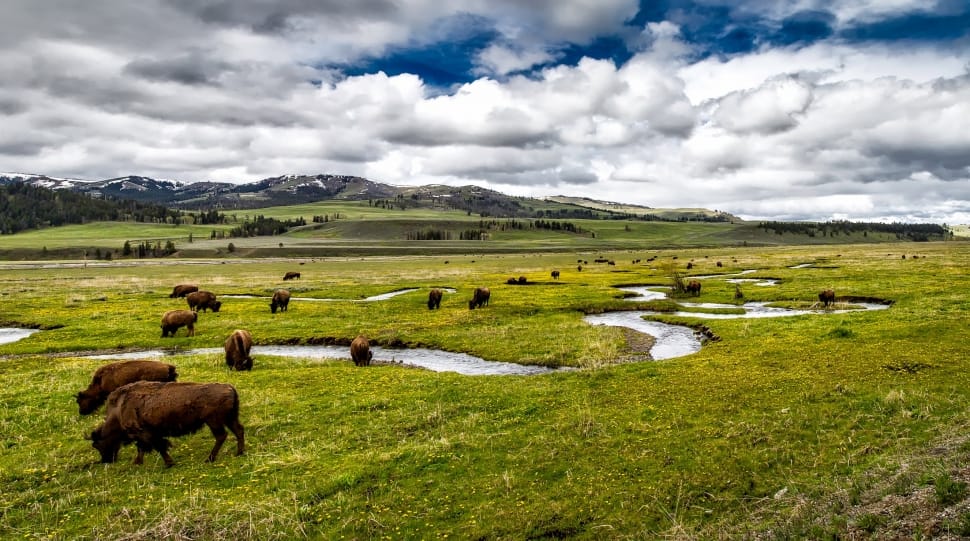Some key differences between rotational, mob and holistic grazing
Holistic Planned Grazing, Rotational Grazing, Mob Grazing … these terms are often used interchangeably. However, there are some noticeable differences in how these systems work and adopting one or another will largely depend on your farming practices, your farm’s type of soil, your livestock, etc.
We have put together a short summary to help you better understand these differences.
Set stocking
This system allows livestorck to stay on the same land for a long time. Most public grasslands are managed this way around the world. It’s particularly the case in the Alps in Europe or in the Western United States where the livestock (beef and sheep) are turned out to graze on large areas in brittle or hardly-accessible environments until the end of the season. Set stocking doesn’t imply any particular management and the livestock is led by its own natural behaviour. With this system, the livestock is often housed indoor or in feedlots in winter and fed complementary dry hay, silage or grains depending on the type of farming.
Rotational grazing
Livestock is moved from one pasture to the next. The rotational grazing helps manage and prioritise the growth rate of the grass and recovery time of plants. The livestock will often rotate in the same pattern through the same pastures each year, depending on the weather and the access to the pastures. This system is typical in Europe, especially in England and in Ireland, with small herds and small pastures available.
Mob grazing
This is high stock density, short-duration grazing, where there are high numbers of animals bunched together to increase animal impact. They are moved frequently, sometimes up to three times per day. It is more related to rotational grazing because the livestock is kept on a set rotation. This system is typically used in New Zealand, over perennial grass or crops (brassica, fodder beet…).
Holistic Planned Grazing
Even though this practice has existed for a long time, it has been re-conceptualised by Allan Savory. This system takes into account the time that a plant is exposed to a grazing animal so that the recovery of the plant is planned, and social, economic and environmental factors are considered in the grazing chart for each year. For instance, the family holidays are accounted for in the plan to consider the time away from the farm. It also considers wildlife and the grazing plan is organised around nesting and breeding seasons. The planned moves are usually shorter and faster during the fast plant growth period and slower during the slow growth and non-growing seasons. The holistic grazing plan considers plant recovery, stock days per acre/hectare, rate of gain in livestock, as well as other calculations and factors. Disclaimer: Savory’s work has sometimes been criticised by some scientists, but grazing in this manner can actually protect and regenerate grasslands or even reclaim degraded land that was once desert.

Whatever grazing system you are using or trying to implement, “grass is one of your untapped resources for profitability. Like other business entities, you have assets and one of your biggest assets is often your land. It’s a precious commodity that is no longer being produced so it must be cared for and cherished to optimize its potential and to maximize your profits,” according to Lance Paskewitz, Hustler’s Business Development Manager for North America.
Sustainability is indeed about the environment, but it’s also about social development and profit. Here at Hustler, we believe in sustainable farming practices, in particular natural pasture grass-feeding, and that belief drives the research and development behind our entire range of world-leading livestock feeding solutions. The benefits of natural grass-fed livestock are many – from happier, healthier animals and naturally fertilised paddocks through to better-tasting meat and dairy. If you would like to join the movement, please subscribe to our newsletter using the form down below. If you want to share your sustainable farm story with us, please contact us!


























